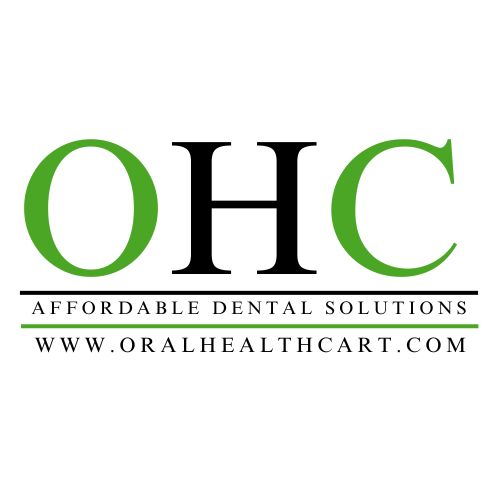Ergonomic Handling Of Dental Elevators For Safer Extractions
The Dental Cart
.jpg)
Ergonomic Handling Of Dental Elevators For Safer Extractions
Tooth extractions are among the most common yet delicate procedures in dentistry. While precision, patient comfort, and clinical skill are vital, one often-overlooked factor that influences extraction success is ergonomic handling of dental elevators. Poor technique or improper grip can lead to instrument slippage, patient trauma, or operator fatigue.
At Oralhealth Cart, we know that even the highest-quality elevator can underperform if not used ergonomically. This article explores why ergonomic handling matters, how to use dental elevators safely, and the best practices for preventing injuries and improving efficiency.
Why Ergonomics Matter in Dental Extractions
Ergonomics is the science of optimizing tool use to reduce strain, improve accuracy, and prevent injury. In dental extractions, elevators act as levers to luxate and loosen teeth from their sockets.
When handled ergonomically, they:
-
Reduce excessive force on the tooth and surrounding tissues
-
Lower risk of slips and accidental trauma
-
Minimize operator hand and wrist fatigue
-
Enhance precision in tooth elevation
-
Improve overall patient safety and comfort
On the other hand, poor handling can cause root fractures, socket damage, or instrument-related accidents.
1. Selecting the Right Dental Elevator
The first step toward ergonomic handling begins before the procedure — by choosing the correct elevator for the case.
Factors to consider:
-
Type of extraction: Straight elevators for general luxation, Cryer elevators for broken roots, periosteal elevators for soft tissue reflection.
-
Size & weight: Choose a handle that fits comfortably in your hand, avoiding excessive bulk or overly narrow grips.
-
Material & balance: High-quality stainless steel with balanced weight distribution reduces strain during use.
Tip: At Oralhealth Cart, we provide elevators designed with ergonomic handles that improve grip stability and reduce slippage.
2. Proper Grip Techniques
The way you hold a dental elevator determines both your control and safety.
Ergonomic grip guidelines:
-
Use a modified pen grasp or palm-thumb grasp for stability.
-
Keep your wrists in a neutral position to avoid repeated strain injuries.
-
Maintain a firm but not overly tight grip — excessive force can cause hand fatigue.
-
Rest fingers against a stable area (finger rest) to control movement and prevent slips.
Avoid: Applying force with just your wrist or gripping the elevator like a kitchen knife.
3. Controlled Application of Force
Elevators work best when pressure is applied gradually, allowing periodontal ligaments to stretch before complete luxation.
Best practices:
-
Apply slow, steady force, not sudden jerks.
-
Use lever action against bone, never against soft tissue.
-
Avoid excessive twisting that could fracture roots or damage the socket.
-
Ensure adequate visibility and lighting before applying force.
4. Avoiding Common Safety Hazards
Even experienced dentists can encounter risks if ergonomic principles are ignored.
Potential hazards include:
-
Instrument slippage due to sweaty gloves or unstable grip
-
Operator strain injuries from awkward wrist angles
-
Unnecessary tissue trauma from improper leverage
-
Patient injury if force is misdirected
Prevention tips:
-
Use elevators with textured, anti-slip handles
-
Maintain a dry working area and replace gloves if needed
-
Always arrange the patient for optimal operator access and posture.
5. Maintenance for Ergonomic Efficiency
Even the best handling technique can be undermined by poorly maintained instruments.
Maintenance essentials:
-
Clean and sterilize elevators after every use to prevent corrosion and maintain smooth surfaces
-
Regularly check for handle cracks, dull tips, or misalignment
-
Replace worn-out elevators promptly — damaged tools are harder to control and unsafe to use
6. Operator Posture & Body Mechanics
Ergonomic handling isn’t just about your hands — your whole body position plays a role.
Posture tips:
-
Sit upright with feet flat on the floor
-
Adjust the patient chair so the working field is at elbow height
-
Keep shoulders relaxed and elbows close to your body
-
Alternate between sitting and standing for longer procedures to reduce strain
These adjustments improve control over the elevator and reduce fatigue, especially during multiple extractions.
7. Training & Skill Development
Even with ergonomic tools, skill comes with training and practice. Regular workshops, continuing education, and mentorship can help dentists refine:
-
Correct elevator selection
-
Grip stability
-
Force application techniques
-
Awareness of patient comfort cues
Oralhealth Cart partners with dental professionals by not only supplying tools but also sharing handling guidelines to promote safety and efficiency.
Ergonomically Designed Elevators from Oralhealth Cart
We understand that safe extractions rely on both technique and tools. That’s why our dental elevators are:
-
Crafted from premium stainless steel for durability
-
Designed with ergonomic, non-slip handles
-
Balanced for precise force application
-
Autoclave-safe for repeated sterilization
With the right instrument in hand, your technique becomes more efficient, controlled, and safer for your patients.
The ergonomic handling of dental elevators is more than just a comfort factor—it’s a cornerstone of safe, efficient, and precise extractions. By selecting the right tool, maintaining proper grip, applying controlled force, and following good posture, you can protect both your patients and yourself from unnecessary risks.
With Oralhealth Cart’s range of ergonomic elevators and commitment to dental excellence, you can perform extractions confidently, knowing you have both the right technique and the right tools.
Categories: Prostho Instruments


 Oralhealthcart Products
Oralhealthcart Products

